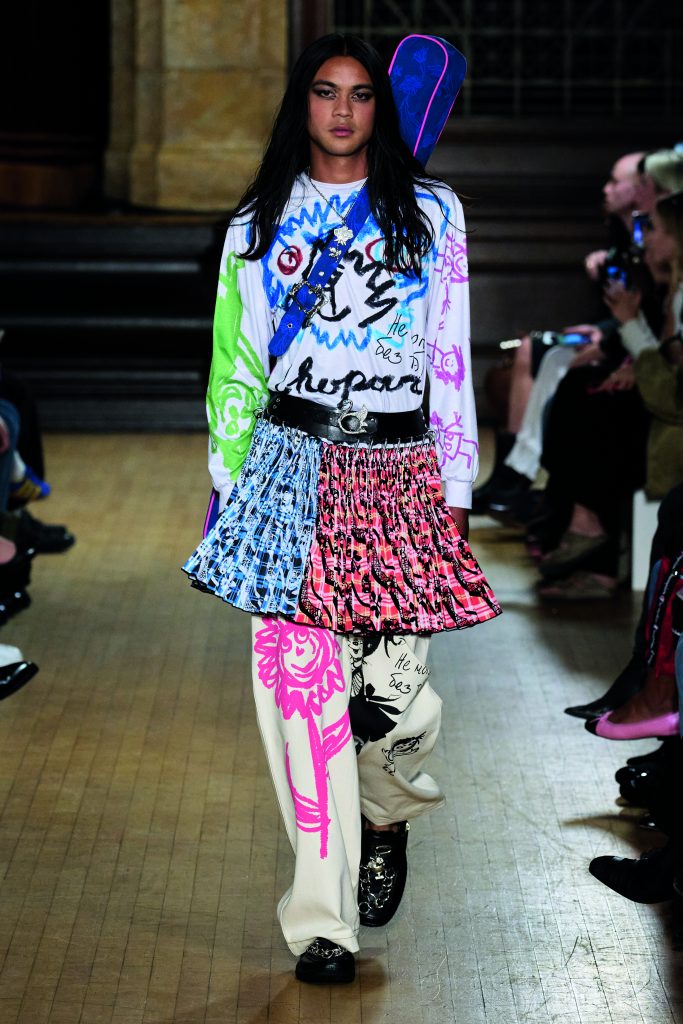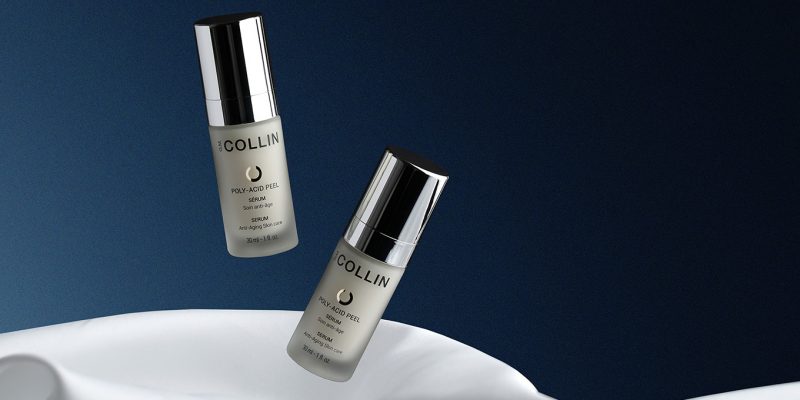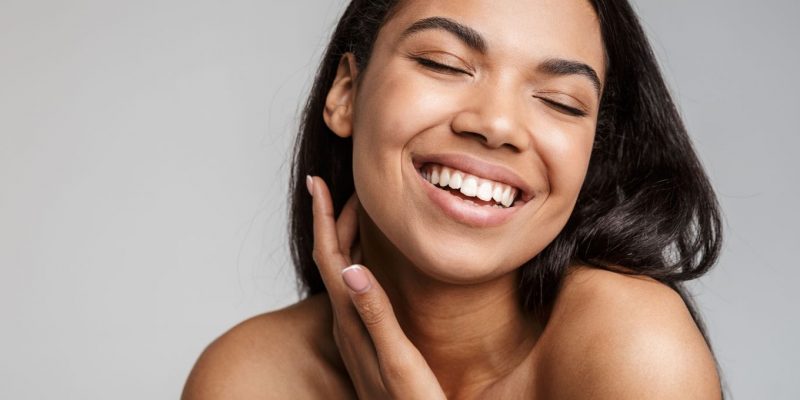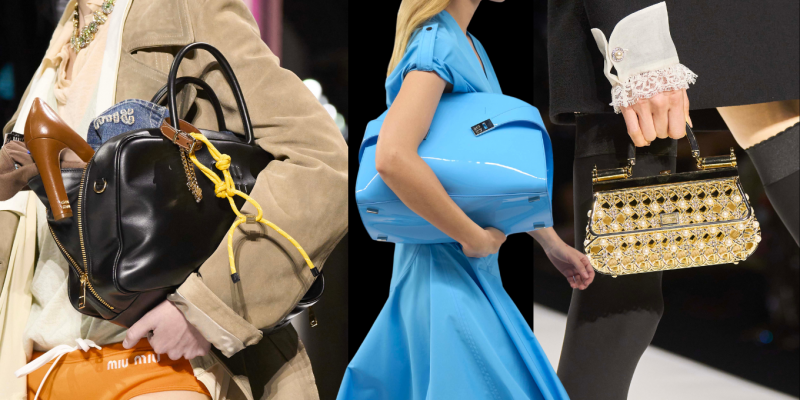Trends
Maximalist Style Is Making a Comeback
Guided by eco responsibility and eclecticism, chaotic dressing is bubbling up on social media and winning over gen Z.
by : Marouchka Franjulien- Oct 3rd, 2023

Sara Camposarcone by Philip Vukelich
Although HBO’S Sucession is now in our rear-view mirror, the series left behind some big TV-history moments. The show sparked plenty of talk about a minimalist trend called “quiet luxury,” an upmarket style that touts the low-key refinement of the premium high-end labels favoured by the intergenerationally wealthy. (Think The Row, Brunello Cucinelli and Loro Piana.) But, as Isaac Newton observed, for every action there’s an equal and opposite reaction, so on the other end of the spectrum, you’ll find maximalism: It’s eccentric, young, loud, exuberant and sort of an “eff you” to the pandemic, lockdowns and the sleek refinement of recent years.
In the 1960s, you’d have to have gone to London’s Carnaby Street, with its trendy youth, to put your finger on the pulse of current fashion. These days, you can just open TikTok and search the hashtags #maximalistfashion and #dopaminedressing (which refers to colourful and happy clothes) for content that has accrued more than 221 million views. At its core, this style is all about upping your colour, pattern and accessory game, and it’s promoted by maximalistas like Quebec-based @emiliafart (Emilia Fart is her persona name) and Ontarian @saracampz (Sara Camposarcone).
Hamilton-born Camposarcone’s 1.5 million followers have been won over by her bright, lively garb. “I love the rebellious side of maximalism and the fact that there are absolutely no rules except wear whatever you want,” she says. Camposarcone is just as likely to be seen in a frilly vintage ballgown as in a clown costume or rubber-ducky earrings.
@saracampz Just a casual work outfit as per usual🦹♀️💚🎀🌀🤲 #fyp #grwm #ootd #styleinspo #fashiontiktok #maximalism #maximalist #vintagefashion #uglyshoes #hulkshoes #workoutfit #lettuceearrings #jeremyscott #basketballjersey #grunge #90saesthetic #fishnets #80sfashion ♬ original sound – Sara Camposarcone
To the untrained eye, Camposarcone’s fashion-defying sartorial selections look more like exciting costumes than well-planned outfits. But she and other maximalist fashion purveyors, with their colourful hair, fantasy makeup and layers of flashy clothes and accessories, are doing far more than just slipping on whatever they find at Value Village. “If I’m wearing a yellow necklace, I generally try to weave the colour somewhere else into the ensemble too,” says Camposarcone of the thoughtful choices she makes. Although the fun-loving fashionista has always been passionate about bold styles, she wasn’t peacocking in public pre-pandy. “I changed jobs, which led to me creating a TikTok account [on which] to post my outfits,” she says.
For many other gen-Z posters, the seclusion and boredom of lockdown sparked all kinds of unbridled creativity. “There was this resurgence of home-based activities, which rekindled people’s enthusiasm for working with their hands,” explains Jaeyeon Park, a youth writer at leading global trend forecaster WGSN. That’s how knitted pieces, pearl jewellery and other DIY goods found their way into current maximalist looks. Camposarcone agrees, as she makes a lot of her own outlandish accessories and is honing her sewing skills by upcycling pieces from her wardrobe to keep her threads as eco responsible as possible.
 Chopova Lowena S23/Launchmetrics Spotlight
Chopova Lowena S23/Launchmetrics SpotlightYou might think that the eco side to this trend is contradictory to a style that’s all about excess, but WGSN prefers to call it “conscious hedonism”; it’s largely being embraced by the younger generation, who want to shop responsibly without leaving creativity by the wayside. “Playing with maximalist style doesn’t necessarily have to mean excessive consumption, just like leaning into a minimalist aesthetic isn’t always eco responsible,” points out Park. On TikTok, maximalist fans often seek out vintage stores and second-hand shops to replenish their wardrobes, which allows them to mix genres and decades. “I buy very few new pieces and zero fast fashion,” says Camposarcone. “When I pick up used pieces, I’m consciously avoiding overconsumption. I swap clothes with my friends, and when I need to make room in my closet, I donate to a women’s centre.”
Though maximalism is nothing new, the eco-friendly bent is. “You have to remember that anytime a [maximalist] moment happens, it’s not a carbon copy of what came before,” says Melissa Marra-Alvarez, curator of education and research at the Fashion School of Technology’s Museum at FIT in New York City. In 2019, the fashion expert put on Minimalism/ Maximalism, an exhibition showcasing these opposite trend movements. “Each stimulates the evolution of the other and contributes to defining it over time. During times of great upheaval and uncertainty, minimalism makes a comeback, [and that is] followed by an ascendance in maximalist style, which is associated with prosperity.” The cyclical nature of fashion isn’t an exact science, though, so the maximalist aesthetic could also be a way for people to get noticed—to claim their space in the world. “For many, the pandemic amplified feelings of chaos and anxiety, so fashion was a way to express [those feelings], especially via eccentric details and styles,” adds Park.
“Playing with maximalist style doesn’t necessarily have to mean excessive consumption, just like leaning into a minimalist aesthetic isn’t always eco responsible.”
Today’s maximalism seems to hearken back to the comforting nostalgia of the safer-feeling 1990s and 2000s, and its devotees have a particular predilection for Harajuku fashions. Originally named after a high-fashion district in Tokyo that came into the spotlight in the 1970s, “Harajuku” has morphed into an umbrella term for a variety of aesthetics and subcultures born from a militant freedom of expression that breaks with traditional Japanese norms. Harajuku’s vibrant, playful style includes outlandish layering, and it was immortalized by the iconic Fruits magazine, which was founded by photographer Shoichi Aoki. In circulation from 1997 to 2017, the monthly fashion mag’s iconic style is now rising from the ashes and is defined by things like leggings, vibrant patterns, neon jewellery, hair clips and a tendency for quirky, childlike pieces—all of which have been scooped up as a part of 2023’s maximalist aesthetic.
In a similar maximalist vein that’s less colourful and joyful –but just as eccentric—there’s the “weird girl” aesthetic. Rising to prominence in 2022, this style plays the unique card pretty hard, mixing textures and time periods, especially ’90s grunge. (Bella Hadid, Doja Cat, Iris Law and Ella Emhoff—stepdaughter to American VP Kamala Harris—are a few of its biggest fans.) While the current maximalist wave plays on excess, the #WeirdGirlAesthetic is slightly more sombre and niche. The style has found a major supporter in Heaven—a branch of the Marc Jacobs omniverse—which has incorporated influences from Japanese subculture. (Shoichi Aoki happened to work on Heaven’s fall/winter 2020/2021 photo shoot.)
“Since the pandemic, the world is kind of a different place, and even if it’s subconscious, we’re all looking for a little more joy,” says Camposarcone. “We often dress with other people in mind, and I think that’s where we can get lost.” Essentially, maximalism comes from a desire to live freely,
openly, exuberantly and without worrying about “the rules.” It’s about learning how to dress for ourselves—in what makes us happy—and giving a big maximalist middle finger to what other people think.
Newsletter
Join our mailing list for the latest and biggest in fashion trends, beauty, culture and celebrity.
Read Next

Fashion
10 Canadian Swimwear Brands to Shop This Summer
Hit the sand in style this beach season!
by : Allie Turner- May 2nd, 2024

Beauty
This Exfoliating Serum Creates a ‘‘New Skin’’ Effect
Say hello to smooth, radiant skin.
by : ELLECanada.com- May 2nd, 2024

Beauty
ELLE Tried It: Five Serums to Up Your Skincare Game
Members of the ELLE team tested Avène Dermatological Laboratories’ five new concentrated serums. Here's what they thought.
by : ELLE Canada- Apr 25th, 2024




